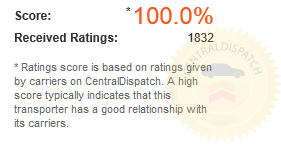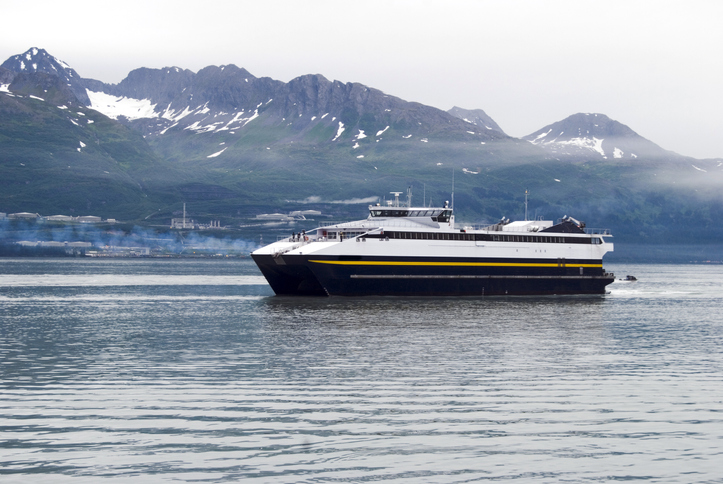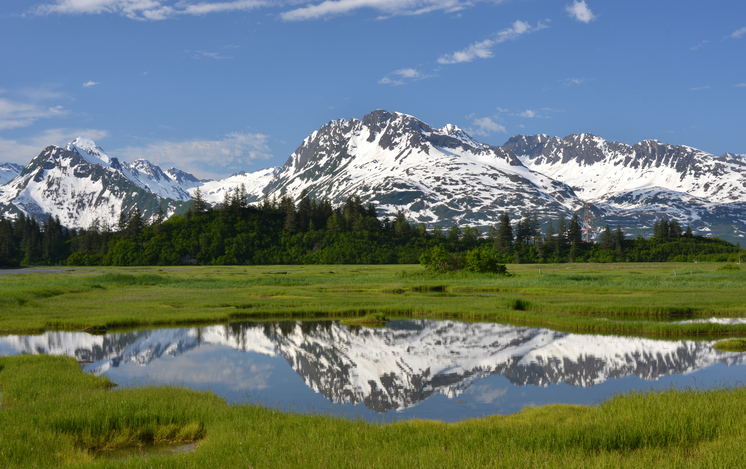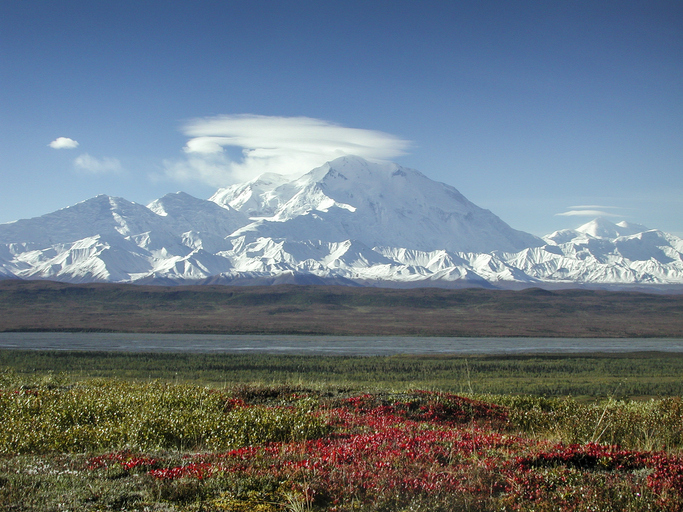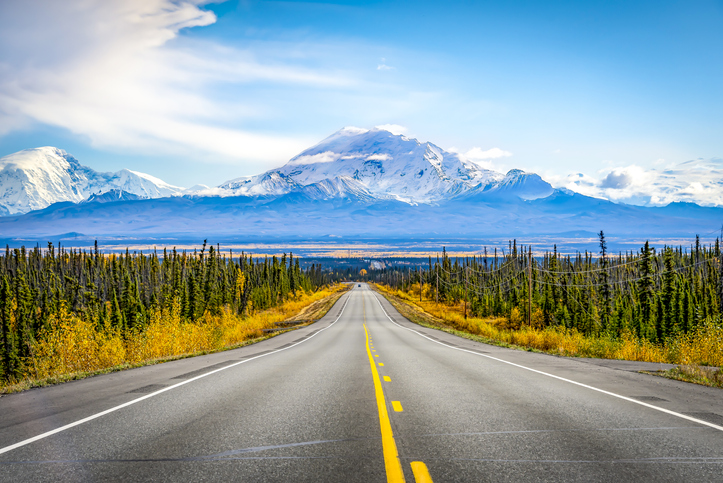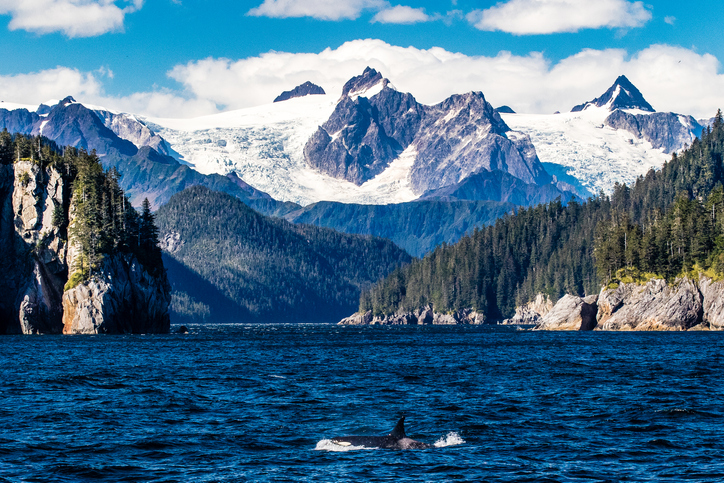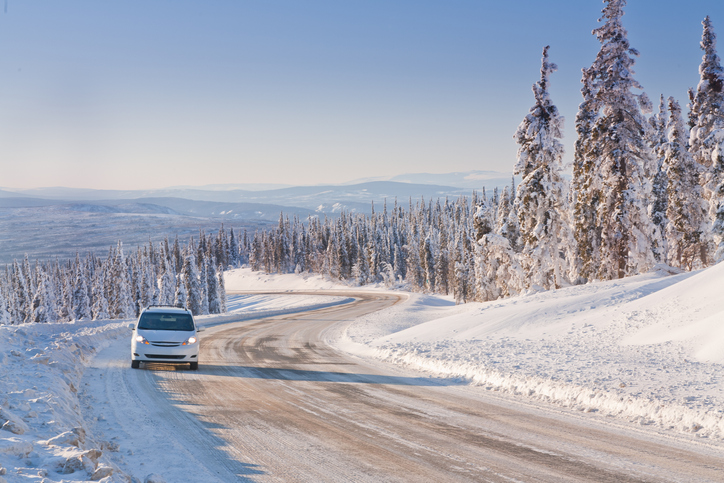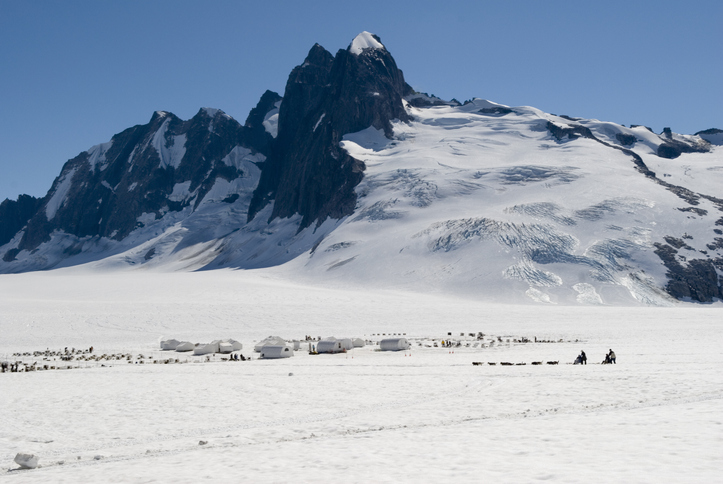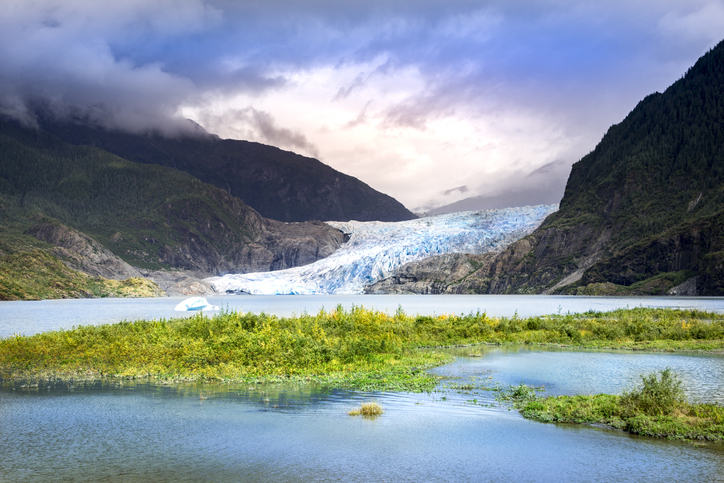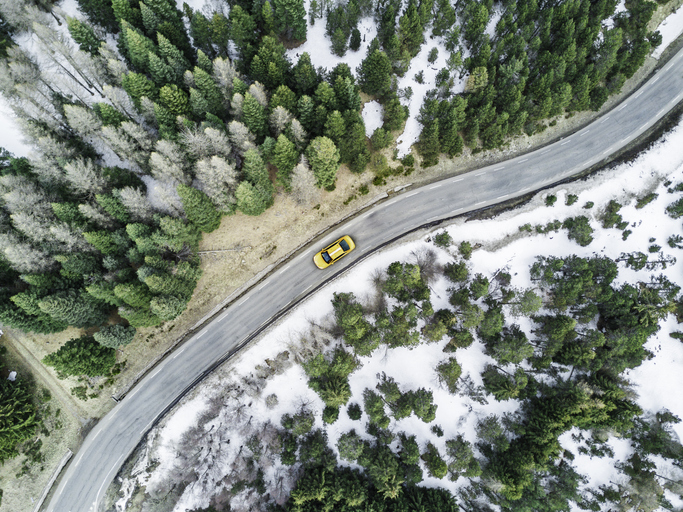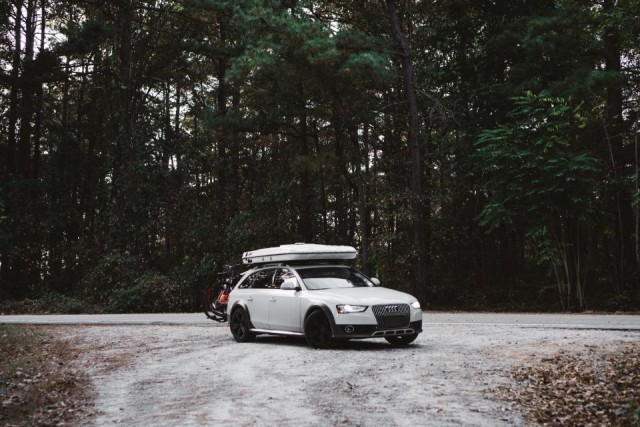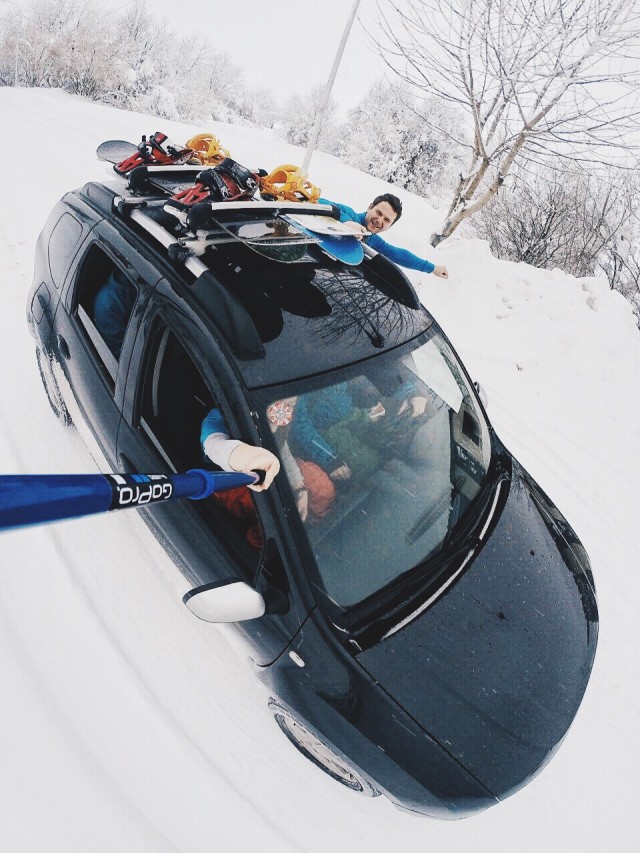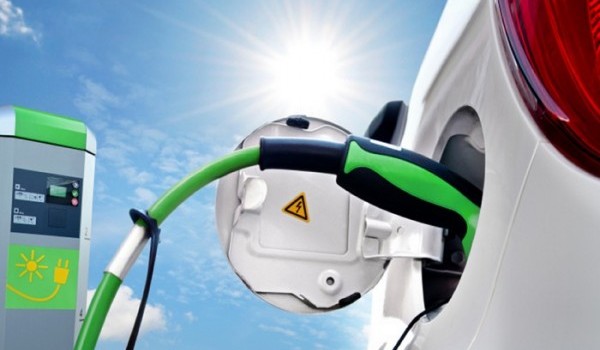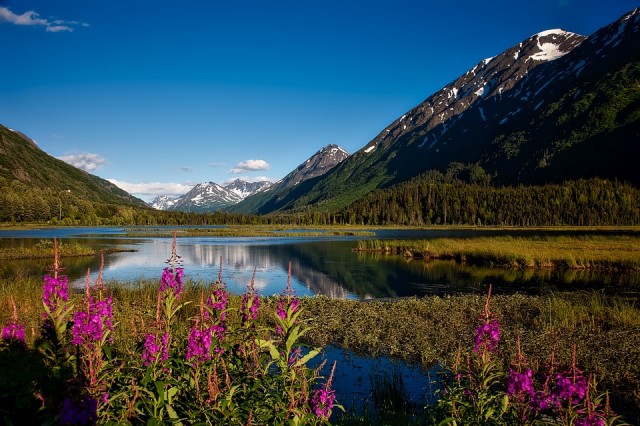Jump to:
The basics about shipping your vehicle to Alaska
Why ship instead of drive?
What will it cost me to ship my car to Alaska?
How long will it take to ship my car to Alaska?
Where can I ship my car in Alaska?
The types of cars you can ship to Alaska
The best ways to ship your car to Alaska
What’s next after my vehicle is delivered?
Conclusion
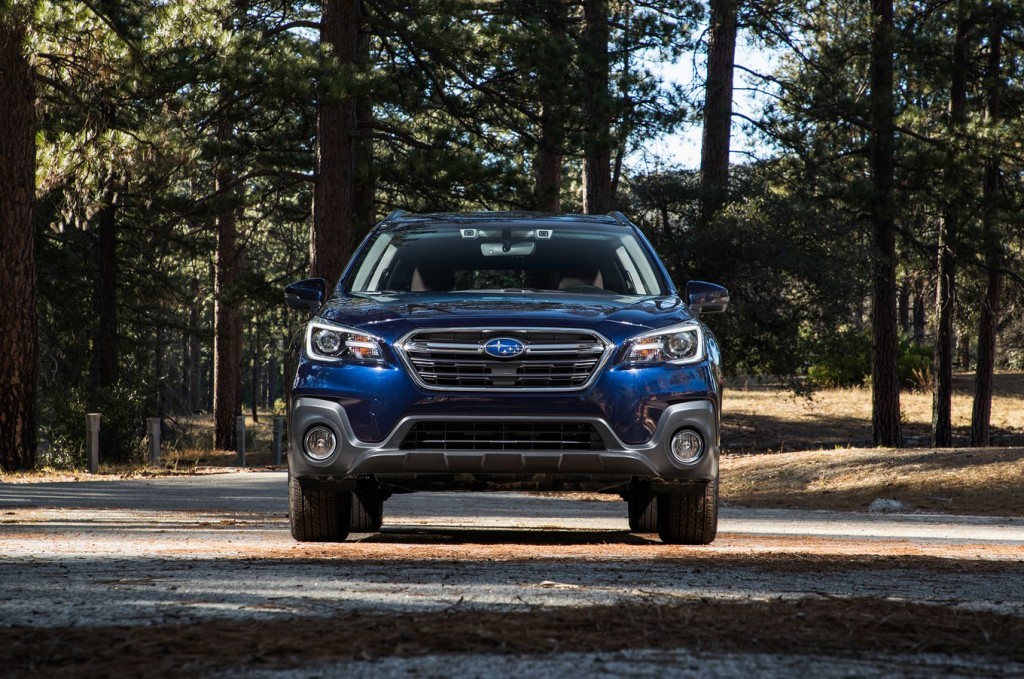
From pretty much anywhere in the continental United States, a trip by car to Alaska is quite a long haul. Whether staying for an extended period or moving there, most people choose to ship their car there.
Having your own vehicle is almost a necessity in Alaska where everything is much more spread out, public transportation is much less available, and rentals tend to be a little more expensive. Alaska is, by far, the largest US state clocking in at well over six hundred thousand square miles big.
In general, renting a car during an extended trip can prove extremely costly. Many times, it makes much more sense just to ship your own vehicle to your destination. You probably have several questions like “What will it cost?” and “How long will it take?”
This guide is designed to answer your questions and give you all the detail you need in order to be able to ship your car to Alaska and be confident while you are doing so.
The basics about shipping your vehicle to Alaska
First and foremost, you’ll want to make sure that you plan ahead. Realistically, you can expect it to be without your car for a little over a week to two weeks while it ships to the last frontier (Alaska). Your shipping duration will vary based on several factors most importantly including distance.
So, you will need to decide, do you want to split that time between when you are home and in Alaska? Do you want to spend a week or so at home without your vehicle? Or do you want to wait a week or so while you are in Alaska? It’s entirely up to you.
You should also give your auto transport company as much notice about your shipment as possible. Expedited shipping will cost you an additional fee so try and avoid last minute planning if you can. We recommend that you give your auto transporter a month’s notice, so you will have the best results and lowest cost.
As with any other vehicle shipment, you will want to be sure that you have your car ready for shipping by the time your driver arrives to pick up your car:
- Make sure that you have a quarter tank of gas but no more than that. This allows the driver to get the car on and off the carrier as they need to but won’t add extra weight to the vehicle and will adhere to Coast Guard regulations as well.
- Be sure to wash the exterior of the car before shipping so that the driver can easily conduct their inspection for pre-existing damage before loading your car.
- Take any detachable non-essential parts off of the vehicle such as roof racks.
- Be sure you have all of your documents ready by the time your driver arrives to pick up your vehicle. This includes: your driver’s license, registration, and a copy of your booking.
- Make sure you have an extra copy of your key just in case anything happens to the one you gave your driver.
- Take all personal items out of the vehicle. Any personal items left in the vehicle will not be covered by insurance if they are damaged, lost or stolen.
- Be sure to tell your driver about any existing issues with the car such as your alignment being off or a headlight being out.
You should also be sure to weather proof your car for the Alaskan climate prior to shipping it. That way, you won’t have to worry about doing so after transport.
Why ship instead of drive?
The obvious answer here is that it will take a lot of time and energy and it will just make life less stressful in general by shipping your car and flying to Alaska.
However, many people don’t know how much driving will end up costing them. Consider that with the average cost of fuel right now, a trip in an average car from New York to Anchorage will cost over $400 one-way. Also consider that you will need to spend several nights in hotels. This will run between $500 and $1000. So, driving yourself will still cost about a thousand dollars (if you were doing so from New York).
The above calculation also doesn’t factor in opportunity cost either. Opportunity cost is “a benefit missed when an investor, individual or business chooses one alternative over another.”
So, when you drive your car instead of shipping it, the opportunity cost includes things like missed days of work. You’re either spending paid time off performing the awful task of driving thousands of miles or, worse, you’re taking un-paid time off and surrendering about a week’s worth of salary.
That’s $1,000 in actual cost and a few hundred dollars more in opportunity cost. For a couple hundred extra dollars you can save the stress of driving thousands of miles and the opportunity cost of missing work.
What will it cost me to ship my car to Alaska?
Like any other car shipment, this will depend entirely on where you are shipping it from, the season and the type of vehicle that you are shipping.
For our purposes, lets assume we’re shipping a car of average size on an open-air carrier during the fall (a less busy time, so, demand is down). It will cost a little under two thousand dollars to ship from Seattle to Anchorage. If you were shipping from Miami, Florida to Anchorage with everything else equal, it would cost about four thousand dollars.
In the end, both trips are a few thousand miles long. The trip from Seattle being slightly over two thousand miles and the trip from Miami being over four thousand miles. So, those prices are quite reasonable. Both coming in at a little less than a dollar a mile.
Any half-decent carrier or broker will give you a free quote. So, be sure to take advantage of that and shop around a little bit before you commit to ship your car.
Just be aware, whenever you are shipping your car anywhere that the quotes you get will be reasonably close to the same price. If you get a quote that’s way lower than all the other competitors, it’s likely a bait and switch scam. For example, if four carriers quote: $2000, $2100, $950 and $2050 respectively for the same shipment the outlier ($950) is a scam of some sort.
Most of the time these “bait and switch” scams offer you that low price initially, pick up your car, then tell you there is some issue and demand an additional exorbitant payment. If you refuse to pay it, they will say your car is “already in-transit” and will hold your vehicle hostage. So, avoid these “too good to be true” prices for auto shipping.
How long will it take to ship my car to Alaska?
As we mentioned earlier it will generally take around ten to fourteen days to ship your car to Alaska. However, it really does depend on the time of year that you’re shipping, how far you’re shipping and the weather along the shipping route at the time of your particular shipment.
A cross country shipment like Miami, Florida to Alaska or New York to Alaska will likely take closer to two and a half weeks while Seattle to Alaska could end up taking less than one week for example.
Transit times increase noticeably during carriers “busy season” too. If you ship to Alaska in the fall versus in the summer your transit time for your shipment will likely be a day or two less. This is because as Carriers get busier, there are less of them available. Thus, your shipment will take more time to get to Alaska.
When shipping your vehicle anywhere, you should always plan for the later date of the estimate you get. Most carriers and brokers will give you an estimate on when your car will be delivered. These estimates usually have a three or four day window. It’s best to be prepared for the later part of the estimate in case that’s when the vehicle ends up being dropped off. This way, if it gets delivered earlier than that it won’t be an issue either.
Where can I ship my car in Alaska?
When you ship your car to Alaska you’ll need to pick it up at one of the major ports/central hubs. Don’t worry though, there’s a bunch of ports or central hubs in Alaska where you can choose to ship to. Just choose the port closest to you. The lack of major highways make it almost impossible for auto carriers to get across the state, so residential drop-off generally isn’t available in Alaska.
The ports and hubs in Alaska we ship vehicles to are:
• Anchorage
• Fairbanks
• Dutch Harbor
• Kodiak
• Juneau
• Ketchikan
• Sitka
• Petersburg
• Wrangell
• Craig
• Kake
• Hoonah
• Haines
• Skagway
• Yakutat
• Cordova
• Thorne Bay
• Valdez
The types of cars you can ship to Alaska
You can ship any kind of car you want to Alaska. You may even be able to ship your vehicle if it’s inoperable but check with your shipping provider before you book your shipment.
However, you can also ship many other types of cargo to Alaska. This includes: cars, trucks, SUVs, vans, motorcycles, trailers, RVs, and heavy equipment such as tractors. We recommend calling your shipping provider to discuss any of these sorts of shipments prior to trying to book one.
The best ways to ship your car to Alaska
There’s a bunch of different things to take into consideration when shipping a car to Alaska. The type of transport that you choose is one of them. The vast majority of auto transports are open air transports. These are the normal type of auto carriers you typically see out on the road with a couple of decks of cars.
Sometimes, people will pay a couple of extra dollars to get their car shipped in what’s called the “top load.” The top load are the vehicles on the upper deck of the auto carrier. This is normally advantageous because vehicles in the “bottom load” can get hit with small road debris like pebbles which can cause small scratches or dents during transport. However, the vehicles on the bottom load are partially shielded from the elements because of the cars above them. The cars in the top load are completely exposed to the elements such as snow and rain.
Considering that part of your auto transport will take place in and around Alaska, there’s a good chance snow and ice will occur on the route. So, you will need to carefully consider if you want to risk much higher snow and ice exposure in lieu of avoiding small road debris.
You can avoid both of these things by using a completely enclosed auto carrier during your auto transport. The only downside to this is that it will cost several hundred extra bucks whereas “top load” on an open carrier only costs about a hundred extra bucks and “bottom load” on an open carrier costs nothing extra.
Realistically, most carriers and brokers can offer you these various shipping options and additional upgrades if you so choose. We recommend you use Alaska Car Transport as we are experts at moving any type of vehicle to any part of Alaska. If you need any more information about us or our services, feel free to give us a call today at (907) 331-3100.
What’s next after my vehicle is delivered?
Once you get there and your car is delivered, you are permitted to use a valid out-of-state registration for up to sixty days. So, if you’re staying longer than that, you’ll obviously need to get a new registration.
If you are permanently moving to Alaska, you’ll need to get it registered with the Alaskan DMV and get your documentation and license plates changed. Unfortunately, this can be as arduous of a process as it is in any other state.
There are certain cases where you can have all this done online or over the phone. You will need to call the Alaskan DMV and ask them or contact them online by visiting http://doa.alaska.gov/dmv/.
If you are a new Alaska resident, you will need to register in-person at the DMV unless you live more than fifty miles away from the closest DMV in which case you can register by mail. Unfortunately, you will need to do this within ten days of starting your residency in Alaska.
You will also need to get new license plates shortly after having your car delivered if you are permanently moving to Alaska. You can find more information by visiting http://doa.alaska.gov/dmv/plates/index.htm.
Conclusion
The vehicle registration process once your car is delivered is probably the most complex part of getting a car to Alaska. That’s why you should ship your car there and have one less thing to worry about. If you’re only visiting, then you have even less to worry about by shipping your vehicle.
Driving all the way to Alaska from anywhere in the Continental United States will be a trip of a couple thousand miles. That’s several days on the road. Spending money on fuel and lodging and probably pulling ten or even twelve-hour days driving.
The money that you end up spending on gas and lodging adds up and can easily reach more than half the cost of shipping your car. So, for an extra couple hundred bucks you can skip the long haul and ship your car to Alaska.


